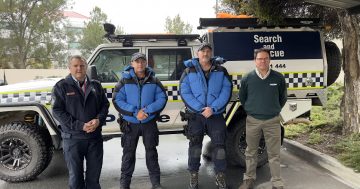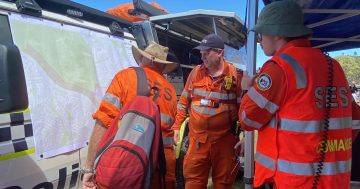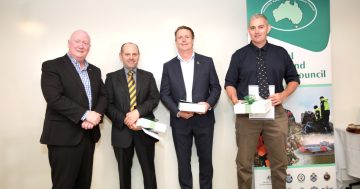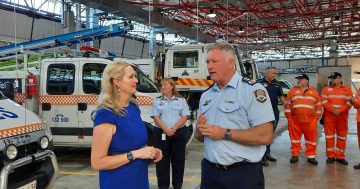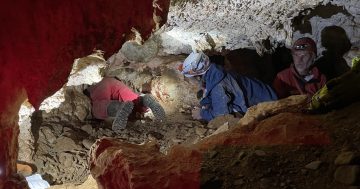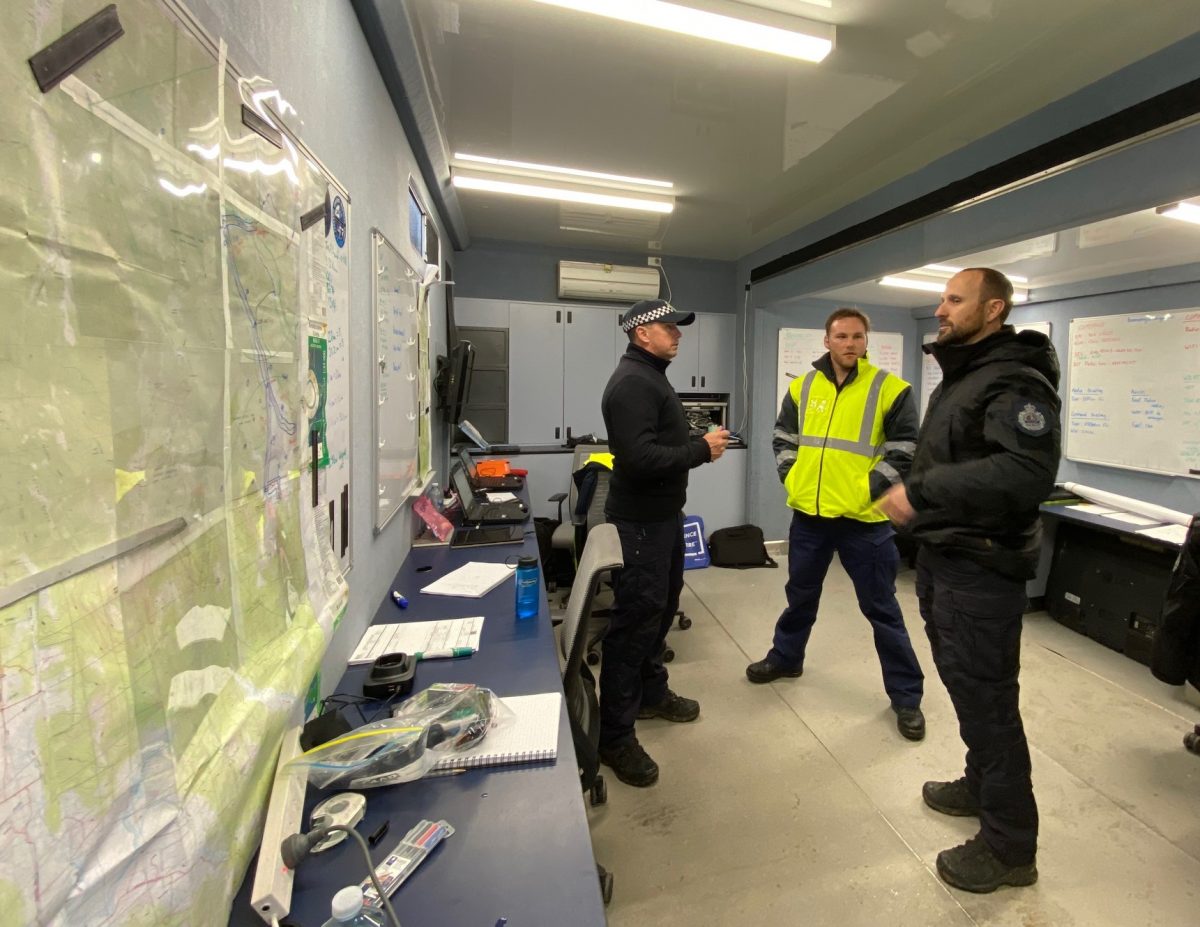
Senior constable Neil Griffiths, ACT ESA’s Jake Bradley and leading senior constable Ashley Childs discuss operational tactics in the communications truck at the police search and rescue training exercise at Namadgi National Park. Photo: Claire Fenwicke.
Bill Townsend’s a 50-year-old man who has been missing in the Namadgi National Park for almost 40 hours.
He went out in hiking boots with no cold or wet weather gear but does have a backpack and tent.
He was searching for the Namadgi Wasp with a friend, who broke his ankle and had already been helped from the area. Bill decided to continue the search alone.
He’s out of food, it’s been raining and it’s cold.
This was the scenario faced by emergency services crews as part of a training exercise to improve and sharpen everyone’s search and rescue tactics.
Representatives from ACT SES, police, AFP search and rescue, ACT Ambulance Service, RFS and rangers gathered at the command point in the rain to receive their orders.
“Search and rescue [in the ACT] is coordinated by the AFP Search and Rescue team. However, we rely on all of our partners, including Toll and the airframes, to conduct a coordinated search,” AFP inspector in charge of specialist response Matthew Reynolds said.
A ‘lucky’ AFP member camped himself somewhere in the area, waiting to be found.
If tracks were accessible, 4WD and bikes could be used; however, walking was usually the method to find someone.
If even walking wasn’t possible and the weather was favourable, helicopter support could be brought in.
Insp Reynolds described training exercises such as this one as “absolutely essential” to “solidify” relationships between all agencies which could be called upon for search and rescue situations.
“To be able to [practice] gives everyone on the ground some familiarity with each other,” he said.
“It’s a great way for us all to learn each other’s capabilities and also our limitations.”
Search and rescues didn’t always have to run hand in hand, as Insp Reynolds explained: “One in this area last year was a rescue of a group of trail runners who had become injured up at height and we couldn’t get the helicopter in overnight,” he said.
“The search and rescue team and the SES spent the night with them, keeping them warm and basically keeping them alive, in my opinion.”
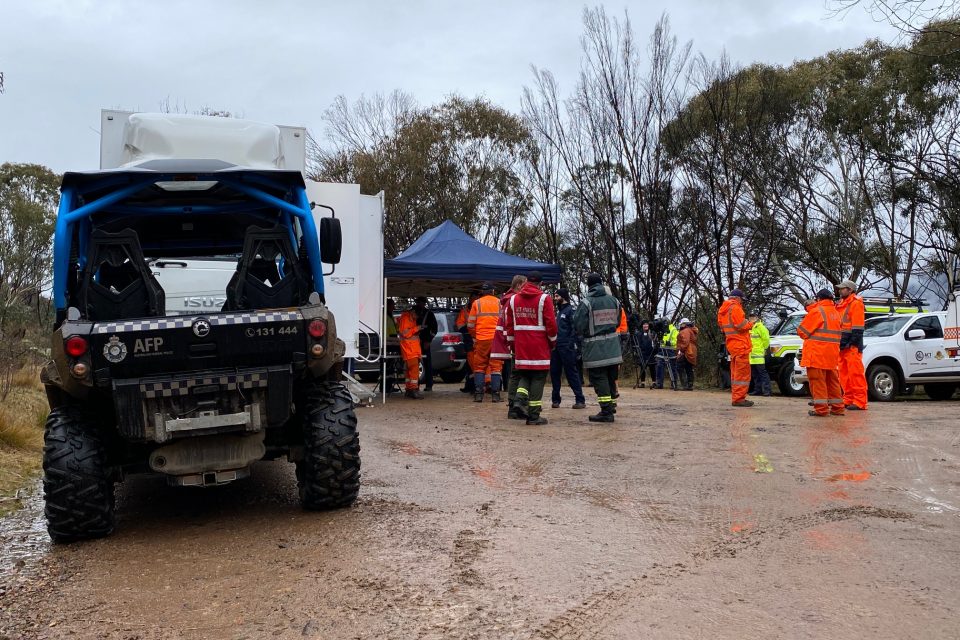
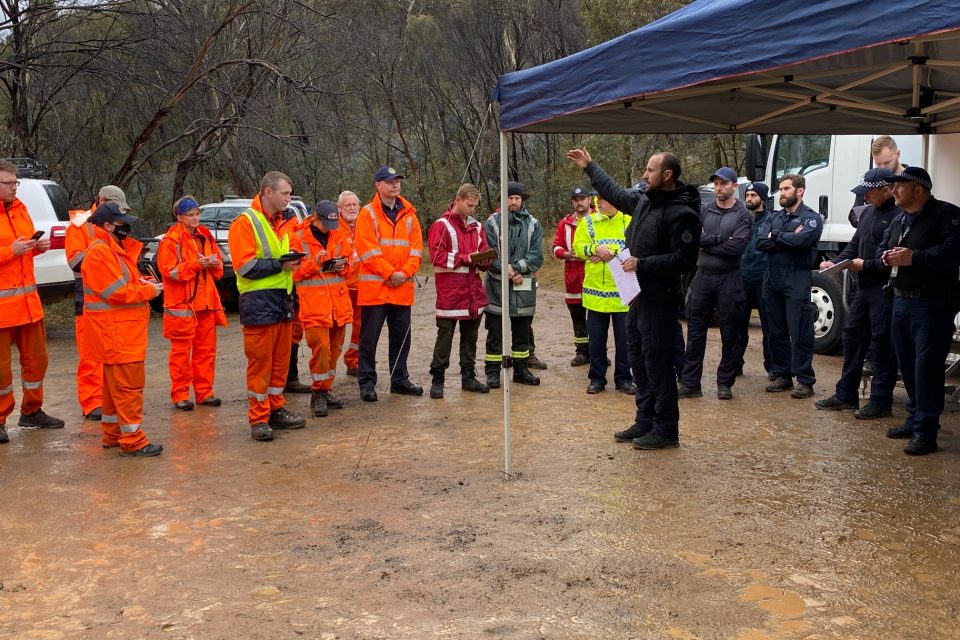
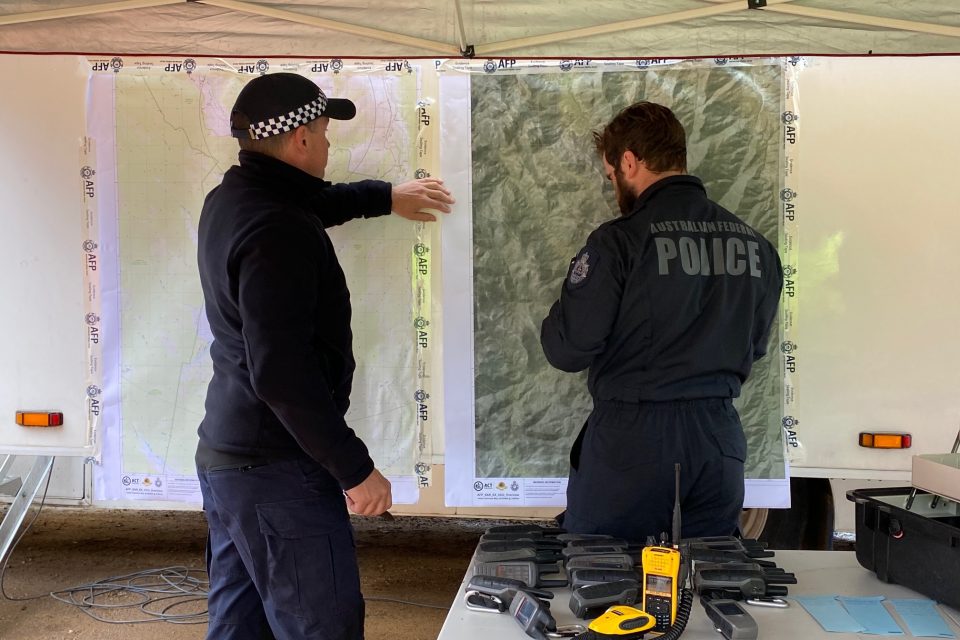
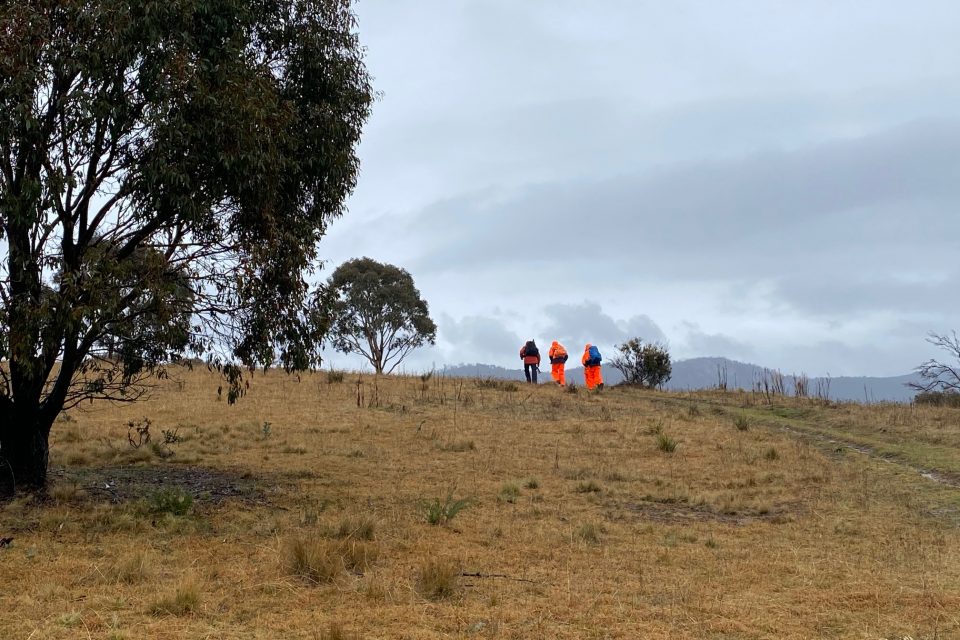
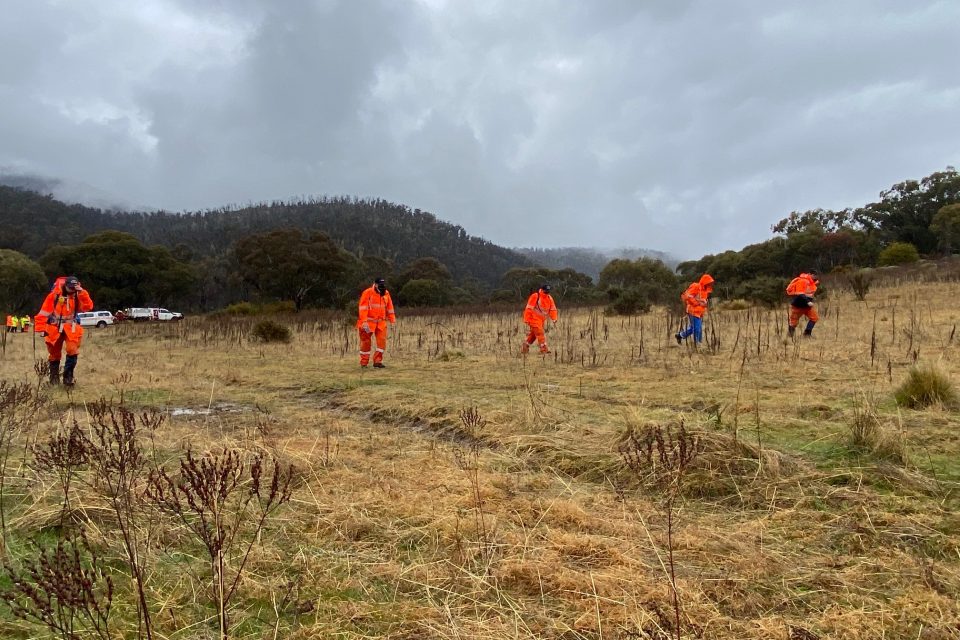

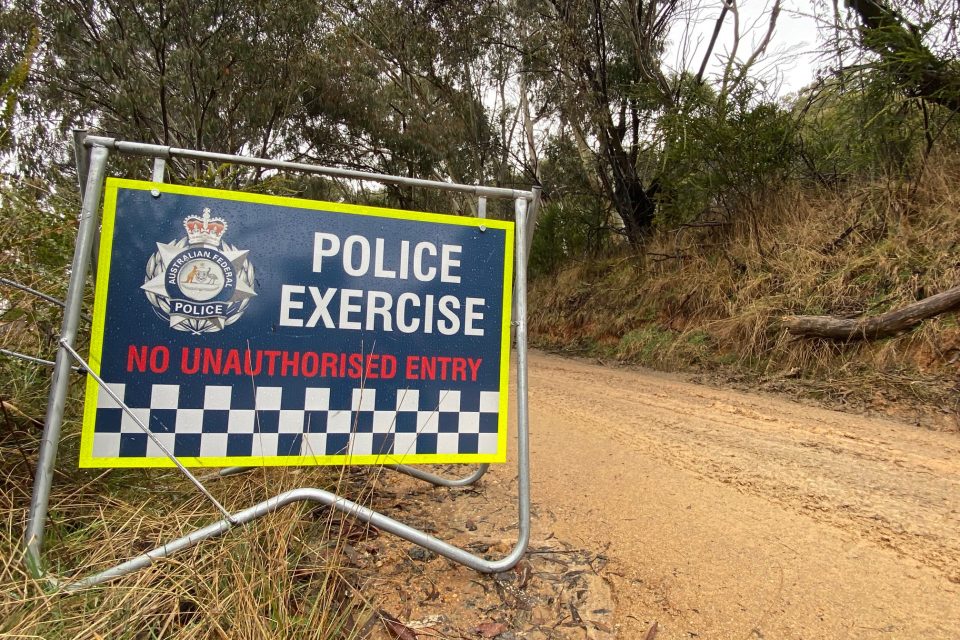
Along with the specialist AFP search and rescue team, ACTSES also had volunteers with specific training in this area.
ACTSES Chief Officer Anthony Draheim said training was done regularly to cover several different skill sets, including swift water recovery, all on the volunteers’ own time.
“Their dedication is unparalleled, I can’t say enough about our volunteer’s service, and the other services, in regards to the time, energy and dedication they continue to provide to the community,” he said.
Searches could take days or even weeks, but Mr Draheim said the workforce SES provided meant they could continuously keep looking.
“It could take days. It could take five minutes. It all depends on how long it takes to find those missing persons,” he said.
Their mapping teams produced detailed topography in response to searches for targeted areas.
In terms of search and rescue hierarchy, response area ACT Policing members had overall command.
Officer-in-charge of Tuggeranong Police Station Inspector Rod Anderson said there were other aspects of a search to consider, including keeping families informed.
“In these sort of situations, they will be quite distressed, and it’s also our job to keep them informed and updated,” he said.
“We may actually bring them out to an area … so they can see the activity that’s going on for themselves, and a lot of the time that gives families a lot of comfort to know that all available resources and all efforts are going into looking for their loved one.”
As the weather warms up, more bushwalkers and explorers took to Canberra’s national parks, which increased the risk of needing to be rescued.
Overall, emergency services urged everyone heading out to be prepared for any scenario.
“Recently, we had a couple of searches and rescues for people who were injured, so we’ve firstly had to locate them and then walk them out, and occasionally we’re able to use the airframes,” Insp Reynolds said.
“[At this time of year] at elevation, there’s still snow, so people need to be prepared for all weather conditions. They need to know where they’re going, people need to carry tents and equipment to sustain them should they get into trouble.”
For the record, Bill was found just over 24 hours after the search operation began.
He was carried out on a stretcher by SES and ACTAS members and received medical attention for his ‘injuries’.












